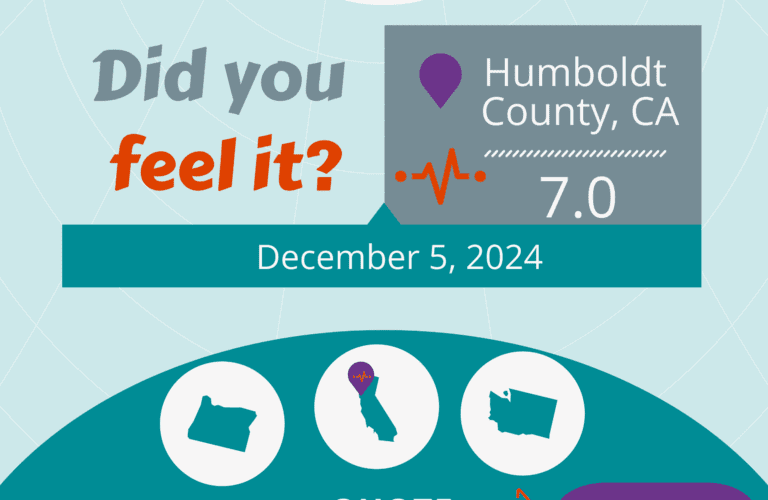Deadlines, projects, over time, meetings, and earthquakes: they can happen while you’re at work. You might be ready for the next tremor at home, but have you thought about earthquake safety at work?
What do you do when the ground starts shaking, and you’re at work? Do you run outside? Do you push your coworker out of the way trying to get to the emergency exit?
Of course, you don’t push your coworker out of the way. Not even if that coworker is the reason that your cream cheese container in the break room fridge always is low by Friday (yes, Jim, it is clearly labeled).
Earthquake safety at work may not be the same as earthquake safety at home. Depending on where you work, there could be even more hazards than in your home.
Here are 4 earthquake safety tips to practice at work:
Drop, Cover, and Hold On.
The “drop, cover, hold on” method is still work-approved. Keep in mind some safe locations near your workplace. Drop to your hands and knees, cover your head and neck with your arm, and crawl (if safe to do so) to one of these secure locations. A safe place can be anything that provides coverage from falling debris and objects, like a desk or a table. After covering, hold on, so your coverage stays with you. Keep your head down to protect your eyes. Don’t have anything that can provide additional coverage? Stand or crouch against an interior wall.
Do not panic.
Avoid panicking and rushing to the exit. You are more likely to be injured moving 10 feet or more from where you are. If you include other people panicking and rushing for the exit, you are even more likely to be injured from either the earthquake or from the crowd. Drop and cover where you are, and go to a safe location that is closest to you.
Stick to the earthquake safety plan.
Develop a plan for after the initial earthquake ends:
- Wait in your safe location until the shaking stops. After the shaking stops, check yourself for injuries. You will be more helpful to others if you have taken care of yourself first.
- Once you have checked yourself for injuries, move carefully and watch out for potential hazards. Stay away from items that have fallen or broken.
- Watch for signs of fire. Earthquakes can start a fire from damaged gas lines, electrical wiring, or appliances.
- If you determine that the building is safe to exit, and it is safer than staying inside, be aware that fire alarms and sprinklers may turn on whether or not there is a fire. Do not exit the building using an elevator. It is much safer to take the stairs to avoid earthquake and fire-related hazards.
Remind your coworkers to stick to the earthquake safety plan.
The best way to keep yourself and your coworkers safe is to practice the same emergency response plan. Your business should have an emergency action plan Opens a new window in place. Everyone should know what to do at the first sign of an earthquake. Hesitating or panicking can mean serious harm to you or others. Encouraging your workplace to practice earthquake response drills will help avoid unnecessary injury during a real earthquake event. Your workplace should also promote first-aid training and fire extinguisher training. This emergency action plan checklist Opens a new window may help your business work toward a safer environment in the future.
Staying calm and practicing what you know without hesitation will make a big difference when you are in a building with other people. These four steps to safety will help keep you (and your coworker, Jim) out of harm’s way.
Get a quote here Opens a new window today, or visit our site to find an earthquake agent near you for expert advice.



